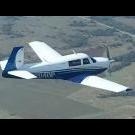Bent retract rod
-
Members Online
- ArtVandelay
- bixmooney
- Utah20Gflyer
- toto
- ElkoRandy20J
- DanM20C
- spaceman39a
- Rmfriday
- cliffy
- Hank
- TCC
- raymondscott0321
- Parker_Woodruff
- Culver LFA
- Ibra
- varlajo
- vorlon1
- Raptortail
- MarkC
- donkaye
- Mooney in Oz
- Robert C.
- philiplane
- alextstone
- amillet
- 201Mooniac
- Garmin Aviation Team
- Mamkeci
- Skyland
- flyboy0681
- DonMuncy
- RangerM20


Recommended Posts
Join the conversation
You can post now and register later. If you have an account, sign in now to post with your account.